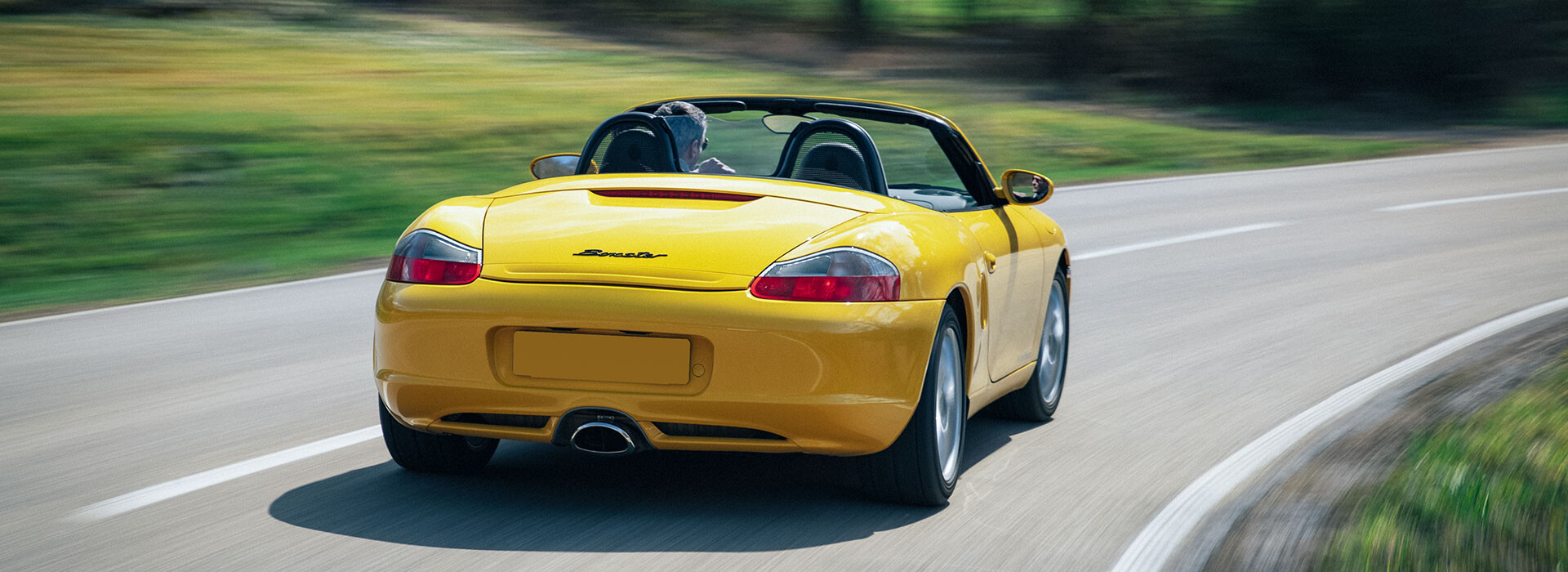Porsche Boxster 986 Buyers Guide 1996 – 2004
Practical Expert Advice to Help You Successfully
Buy a Porsche Boxster 986 1996 – 2004
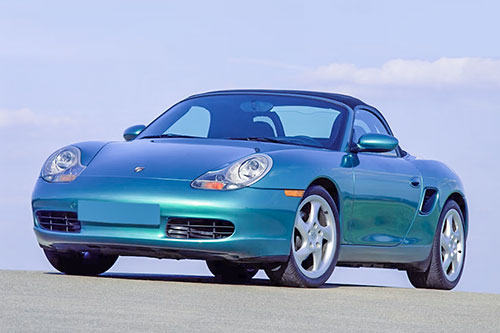 The Boxster 986 Buying Plunge
The Boxster 986 Buying Plunge
If you’re thinking about buying a Porsche Boxster 986 (1996–2004), you’ll likely come across more cautionary tales than stories of carefree Sunday drives. The original Boxster 986 is now well over twenty five years old and officially recognized by Porsche as a classic model. The 986 is very affordable and can be fun, however, widespread concern over technical issues has made many potential buyers hesitant.
Yes, You Should Buy a 986 Boxster
We believe the Porsche Boxster 986 has been unfairly overlooked. While finding the right example is rarely straightforward, with a bit of luck, the right information, and some guidance, it’s possible to score a great deal. Aside from a few well-known issues, the 986 Boxster is generally a solid car.
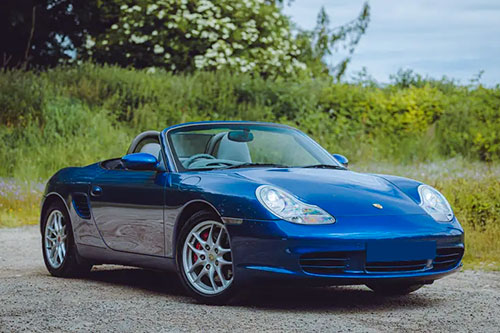 How This 986 Buying Guide Can Help You
How This 986 Buying Guide Can Help You
This guide will help you avoid costly mistakes and common pitfalls associated with the 986 Boxster. We skip the fluff and focus on what truly matters – mechanical concerns, known issues, realistic ownership costs, ongoing maintenance, and expert tips to help you find a worthwhile car. Armed with the right knowledge, there are excellent examples of the 986 Boxster out there waiting to be enjoyed.
Be Aware of What You’re Getting Into
You’re buying a 25+ year-old high-performance car that requires specialized care. Maintenance and repairs will be more expensive than you perceive. The skills and experience needed to efficiently maintain a 986 Boxster are not commonplace. We recommend local specialist repair shops that can help you.
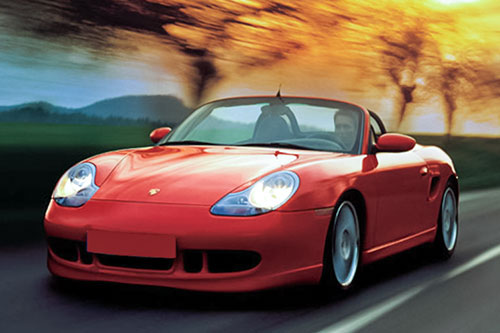 Understanding Your 986 Buying Goals
Understanding Your 986 Buying Goals
Having a good sense of why you want a Porsche Boxster 986 and pre-planning your next step makes ownership free and easy. We think a 986 works well for:
- Fun weekend car – basic maintenance and repair costs
- Fun track car for HPDE – continued investment in reliability and safety
- Long-term investment classic – continual maintenance and expert repairs
We don’t think it works well for:
- Reliable daily driver
- Low-cost sports car – just because it’s a bargain Porsche
- You can’t afford to scrap it!
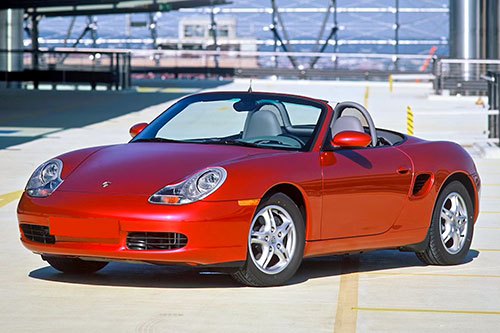 Consider the Unthinkable Before You Buy a 986
Consider the Unthinkable Before You Buy a 986
The Boxster 986 has a series of known issues that can prove catastrophic. Engine replacement will cost north of $25K and transmission repairs are costly too. We think you must consider the unthinkable before you make your purchase. Can you afford to throw the car away or invest in the 986 long-term?
Many people have already invested in rebuilt engines, improved transmissions, upgrades, and preventative maintenance that can turn the 986 into a solid car fit for their individual purpose. Good maintenance and specialized care can make the weekend fun 986 a long-term pleasure. The trick is buying the right car, for the right purpose, and knowing what you are getting into and who can help you.
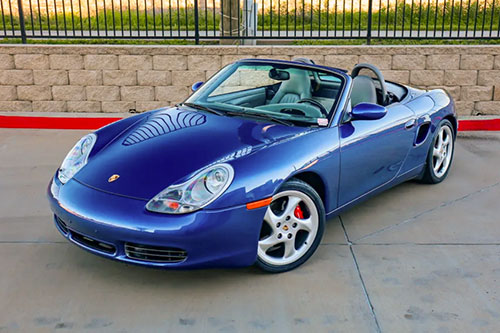 986 Boxster Buyers Quick Check List
986 Boxster Buyers Quick Check List
Before you buy any car, there are a series of questions that you need answers to. See the section “What to look for when buying” below for more detail.
- Why is the car for sale?
- Who is selling the car?
- Actual production date – sticker on driver’s door
- Mileage, maintenance, and repair history
- Number of owners
- Title status: Clean / salvage / rebuilt / other
- Accident history (check Carfax or AutoCheck)
- Service records available
- Geographic ownership history (climate matters: dry vs humid areas)
The sections below open to provide more detail. Select a topic that you want more detailed information on.
Porsche Boxster 986 Brief History – What We Know So far
What Have We Learned About the Boxster 986 So Far?
The concept for the Boxster was first seen in 1993 with production starting in mid-1996 for the ’97 model year. The mid-engine two-seater roadster design was released before the 911 996 and led Porsche sales volume until the introduction of the Cayenne. The Boxster is well balanced, responsive and easy to drive. Maintenance and running costs are at the low end of the Porsche ownership scale. The Boxster featured the newly designed water cooled M96 flat 6 engines.
First Water-Cooled Engine Causes Trouble with Purists
The M96 water-cooled engine was such a departure from the original air-cooled technology that it caused a major division in opinion amongst Porsche expertise that exists right up to today. The Boxster mid-engine design was nothing like the norm Porsche techs were used to – like switching from right hand drive to left hand drive. This is part of the reason why the new cars came in for so much criticism and misunderstanding. To this day, there is a distinct difference between an air-cooled and a water-cooled Porsche expert.
Boxster 986 – First of The New Breed
Originally, a 2.5L flat 6 M96 water-cooled engine was fitted to the 986 Boxster in 1996. Subsequently, the engine was revised in several ways and improved upon to be a 3.2L in the Boxster S before reaching the end of its production by late 2004. Porsche produced two flavors of the 986 Boxster – the base model and the S model.
Production for the 986 ended in 2004 with 164,874 models being produced in total.
Porsche 986 Boxster Reputation
The poor 986 Boxster came in for a significant amount of criticism. The shape of the headlights, engine problems, too long a gear shift throw, low quality plastics, lawsuits, and over ambitious maintenance intervals caused the 986 Boxster to be subjected to a good deal of misunderstanding. In addition, the Boxster has always played second fiddle to the 911 and been seen as the poor man’s Porsche.
Most of the data disclosed suggests less than 10% of the 986 Boxster models had real mechanical issues or failures of any kind. However, longer term ownership points to inherent design issues with the engine that need to be considered going forward. Other than that, the 986 is extremely solid and almost as raw a Porsche as the older air-cooled models.
Mid-Engined Magic
The real upside of the Boxster is the mid-engine design. This makes the car easier to drive, well balanced, and more fun versus it’s tail-happy 911 cousin. The Boxster is near 50/50 weight split as a result of the mid-engine layout and this provides good cornering ability, a positive driver feel, balanced braking, and good traction. The engine sound is also more raw as the intake system is closer to the driver versus the 911 design. Some maintenance on the front of the engine is easy through an access panel inside the passenger cabin. However, work on the topside of the engine is more difficult through the access area under the convertible top, and replacing the side mounted air intake filter can be quite the fight!
Extensive Knowledge Available For Common Mechanical Problems
The first-generation Porsche Boxster 986 is now approaching 30 years old. The 986 Boxster has been driven, raced, broken, dissembled, and put back together many times. As a result, independent specialists have developed extensive knowledge of these cars’ common mechanical issues. Many examples on the market today have already had the preventative work done to address the known problems.
Pricing, Market Trends - Buying Resources
Will the Porsche Boxster 986 Appreciate in Value?
Everything else has! There was a time, not too long ago, when the last air-cooled cars (993 chassis) were cheap to buy. Now it’s easier to find rocking horse poop than a low-cost 993! So, is this possible with the 986 Boxster? It’s certainly true for the 996 911 models, however, the Boxster is unlikely to reach the same level of appreciation. The early M96 engine causes most of the problems and routinely receives the critical press. The Boxster will likely always be the less appreciated Porsche model in the same way as the 944 or 928.
Will the Boxster 986 Be Seen as a Classic?
It should be. Looking out into the future, we can see a generation that will not know cars with internal combustion engines or manual transmissions. The joys of a loud revving exhaust will be unknown! With the change to all-electric cars, and the end of the line called on Boxster production in 2025, the 986 will be the first classic of the Boxster era. Porsche switched engine production to all turbo for the later 718 cars, so only a relatively short window of normally aspirated flat 6 water-cooled engines exists. The 986 is the first version of that era. Cars from the 70s you know were junk at the time, make big money in auctions. Likely the 986 will become a modern classic too – one must just be patient – very patient!
Pricing & Market Trends as of 2025
- Entry-level base 986 Boxster from $8K – $10K condition-dependent
- S models or low-mileage cars fetching premiums
- Good condition, low mileage 02 to 04 models $12K – $14K
- Late S model, low mileage 986 with IMS completed $15K +
Sourcing the Perfect 986 Boxster
Most of the good examples of the 986 are going to end up at a Porsche sales specialist we list on our resource page. These cars will attract a premium price, might be on consignment sale, or at a quality auction site when they become available.
You might be lucky. Sometimes, you’ll find an excellent example or a diamond in the rough in an unusual spot. Nobody is going to sell a Porsche cheap, unless 1) they incorrectly perceive problems with the car or 2) there are real problems with the car or 3) they have no clue! Your job is always to be better informed than the seller.
High mileage 986 cars can be a bargain if you are not afraid to throw the car away if the engine fails.
Porsche Boxster 986 In Detail
Model Years and Variants
Boxster 986 Base Model 1997–1999
- Engine: 2.5L flat-6 M96.20
- Power: 201 hp
- 5-speed manual or 5-speed Tiptronic automatic
Boxster 986 Base Model 2000–2002 Facelift
- Engine: 2.7L flat-6 M96.22
- Power: 217 hp
- Revised interior, new electronics, clear direction indicators
Boxster 986 Base Model 2003–2004 Final Facelift
- Change to single row IMS bearing
- Minor tweaks in styling and options
- Optional glass rear window with defroster
Boxster 986 S Model 2000–2002
- Engine: 3.2L flat-6 M96.21
- Power: 250 hp
- 6-speed manual or 5-speed Tiptronic S
- Larger brakes, dual exhaust outlet, larger wheels
Boxster 986 S Model 2003–2004 Facelift
- Power increase to 258 hp
- Change to single row IMS bearing
- Revised front bumper and other cosmetic updates
Boxster 986 Base Model Vs. S Model – Key Differences
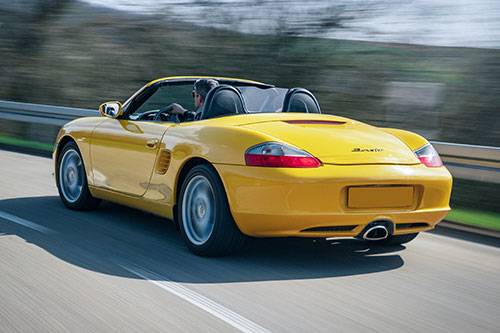 The main noticeable differences between the base model and S model 986 Boxster are that the S model features:
The main noticeable differences between the base model and S model 986 Boxster are that the S model features:
- Larger capacity engine
- 40 HP more power
- Quicker acceleration
- 6 speed manual transmission
- 10 mph higher top speed
- Larger brakes
- 19 inch wheels
- Sharper suspension
IMS Bearing Types in Boxster 986
The 986 Boxster M96 engine features a intermediate shaft or IMS bearing. This is prone to failure and many have already been retrofit with a new bearing. Types of IMS bearings in the Boxster:
- 1997 – 1999 2.5L Dual row ball bearing – Low Failure Rate
- 2000 – 2001 2.7L or 3.2L Dual row ball bearing – Low Failure Rate
- 2002 – 2004 2.7L or 3.2L Single row ball bearing – Higher Failure Rate
986 Boxster Engine Details
Engine Displacement and Power Output
- 986 Boxster M96.20 2.5L 201 hp
- 986 Boxster M96.21 3.2L 250 hp
- 986 Boxster M96.22 2.7L 217 hp
- 986 Boxster M96.23 2.7L 225 hp
- 986 Boxster M96.24 3.2L 258 hp
2.5L M96.20 Features
- Power output – 201HP
- Redline – 6600 RPM
- Cylinder head – early design with some coolant and oil flow weakness
- Engine timing – VarioCam intake valve timing
- Bore x Stroke – 85.5mm x 72mm
- IMS Bearing – Dual row less failure prone
- Oil system – prone to foaming or aeration
- Cooling system – thermostat and water pump issues
2.7L M96.22 Features
- Power output – 217HP
- Redline – 7200 RPM
- Cylinder head – revised design improved coolant and oil flow
- Engine timing – VarioCam intake valve timing
- Bore x Stroke – 85.5mm x 78mm
- IMS Bearing – Dual row less failure prone
- Oil system – Improved oil return and sump design
- Cooling system – Improved flow and thermostat control
- More HP and torque
- Higher rev limit and better throttle response
- Improved ECU and drive-by-wire
2.7L M96.23 Features
- Power output – 225HP
- Redline – 7200 RPM
- Cylinder head – revised design further improved coolant and oil flow
- Engine timing – VarioCam intake valve timing
- Bore x Stroke – 85.5mm x 78mm
- IMS Bearing – Single row more failure prone
- Oil system – Improved oil return and sump design
- Cooling system – Improved flow and thermostat control
- Improved emission compliance
- Better throttle response
3.2L M96.21 Features
- Power output – 250HP
- Redline – 7200 RPM
- Cylinder head – early design with some coolant and oil flow weakness
- Engine timing – VarioCam intake valve timing
- Bore x Stroke – 93mm x 78mm
- IMS Bearing – Dual row less failure prone
3.2L M96.24 Features
- Power output – 258HP
- Redline – 7200 RPM
- Cylinder head – revised design further improved coolant and oil flow
- Engine timing – VarioCam intake valve timing
- Bore x Stroke – 93mm x 78mm
- IMS Bearing – Single row more failure prone
- Higher compression ratio
- Revised intake and exhaust tuning
- Improved engine management (ME 7.8)
- Better throttle response
- Better fuel efficiency and emissions compliance
986 Boxster Transmissions
Manual Transmission
- G86 – 00/01 5-speed 2.5L Boxster 97 – 99
- G86 – 00/03 5-speed 2.7L Boxster 00 – 04
- G86 – 20/21 6-speed 3.2L Boxster 00 – 02
- G86 – 22 6-speed 3.2L Boxster 03 – 04
Automatic Transmission:
- A86.00 5-speed Tiptronic
- A86.01 5-speed Updated for 2.7L engine
- A86.20 5-speed Tiptronic S Model
- A86.30 5-speed Tiptronic S Model
- A87.00 5-speed Tiptronic 03 Facelift
- A87.20 5-speed Tiptronic S Model Facelift
- A87.30 5-speed Tiptronic S Model Facelift
Acronyms and Model Options
Porsche Options and Acronyms
Porsche offers a wide range of build options that allow buyers to customize nearly every aspect of their vehicle, from performance upgrades and wheel designs to interior trims and driver-assistance systems. Options and performance technology typically attract an acronym! So, it’s easy to get lost between your PSM, PASM or PADM when shopping for a used car. In our acronym and options section we list and explain the most common acronyms you’re likely to see when shopping for a used Boxster.
986 Boxster Common Issues and Reliability Concerns
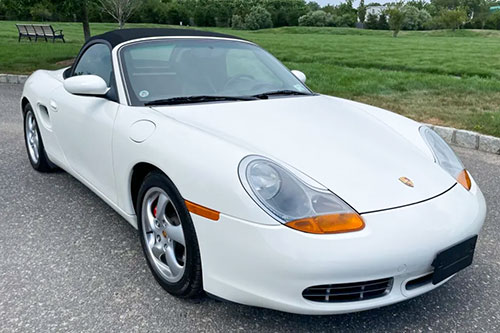 986 Boxster Known Mechanical Issues
986 Boxster Known Mechanical Issues
When considering a Porsche Boxster 986, don’t let the noise of mechanical issues or reliability concerns discourage you. The upside is that most of the known problems are well-documented and can be thoroughly evaluated during a pre-purchase inspection. With proper planning, known issues can either be addressed proactively or managed throughout your ownership.
Recommended Porsche Repair Shops You Can Trust
You need a local Porsche repair shop you can trust to take care of your Boxster. We’ve researched the whole country and have identified local Porsche repair shops that you can trust. More detail on the mechanical issues with the Boxster range can also be found in our Boxster common problem section.
Porsche Boxster 986 M96 Engine Issues
Timing Chain Wear
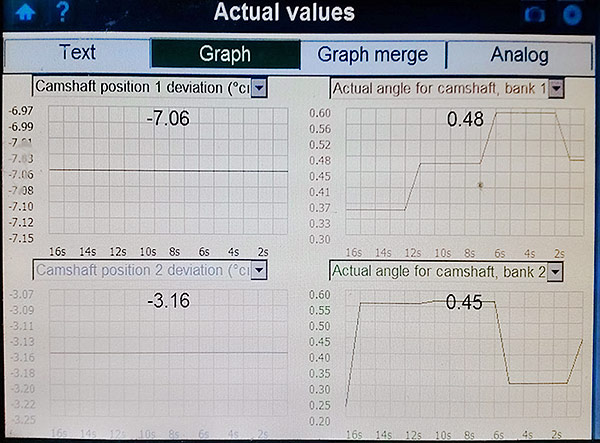 986 Boxster Timing Chain Issues
986 Boxster Timing Chain Issues
Timing chain issues commonly affect the M96 20 and 22 engines in the early cars. It’s important to check the cam to crankshaft timing deviation at a PPI. Wear in the timing system will show up as a deviation angle in the cam to crank measurement. Replacing the chain, tensioners and guides will typically resolve the problem. This is an engine out and expensive job. Most older models have already completed this work – check the history.
Higher Mileage Cars
Wear in the timing chain, guides and tensioners will eventually affect all the M96 engines, so the higher the mileage, the more likely this issue will arise.
IMS Bearing Failure
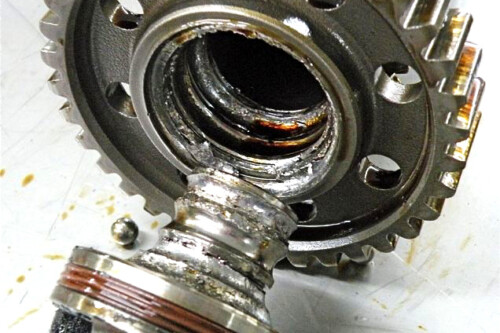 986 M96 IMS Bearing Failure
986 M96 IMS Bearing Failure
The early M96 engine Boxster built up to 2001 are less susceptible to failure than the later cars. The early engines were fitted with a dual row bearing that was more reliable than the later single row bearing that was fitted to the M96 engine after 2000.
Failure of the IMS is expensive and usually results in engine replacement. Most diligent owners opted to preempt the failure and replace the Porsche single row bearing with a dual row version. Cars that have had the IMS bearing replaced have a higher value than ones that haven’t.
More detail on the IMS bearing failure in our common problems section.
Oil Leaks - Rear Main Seal
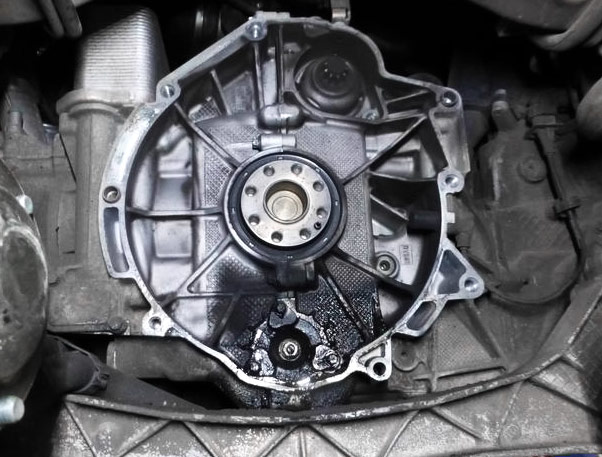 986 Engine Rear Main Seal (RMS) Leak
986 Engine Rear Main Seal (RMS) Leak
There are some common areas where oil leaks occur on the 986 Boxster. Most are easily fixed and are part of the normal wear process. One of the most common areas for an oil leak is the rear main seal. Again, see our common problems page for more information. Oil leaks should not be a barrier to purchase, but they should be considered in terms of the purchase price and the cost of the repair.
Don’t Just Replace the Rear Main Seal
Leaking rear main seals can be signs of other issues and should be thoroughly investigated. On manual cars, a leaking rear main seal can cause significant damage to the clutch and flywheel assembly and adds to the cost of replacement. You only want to replace the RMS once with the most updated version – check for additional causes of the RMS leak before completing the work.
Engine Overheating – Cracked Cylinder Liners
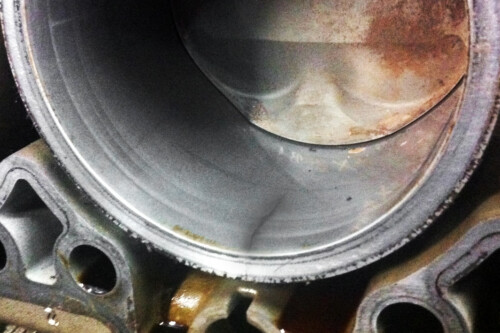 986 Engine Overheating – Cracked Cylinder Liner
986 Engine Overheating – Cracked Cylinder Liner
The 986 M96 engine uses one-piece cylinder liners, which are prone to cracking. A cracked liner typically causes coolant loss and engine overheating. Sometimes, symptoms can take a good amount of time to appear.
Quick check:
- Start with the engine cold.
- Note the coolant level. Mark the level on the coolant reservoir with a sharpie.
- Drive for 30 minutes.
- Let the car idle — the radiator fans kick in and the engine temp should remain stable. If it climbs uncontrollably, stop.
- Shut off the engine and recheck the coolant level. It should rise after the drive and then slowly return toward the cold level previously noticed.
- If the level has dropped or stayed low, it may indicate internal coolant loss from a cracked liner. You might smell coolant in the exhaust when the engine runs.
This isn’t a definitive test as external leaks can mimic these symptoms. However, any post-drive coolant loss should be investigated thoroughly.
Cylinder Bore Scoring
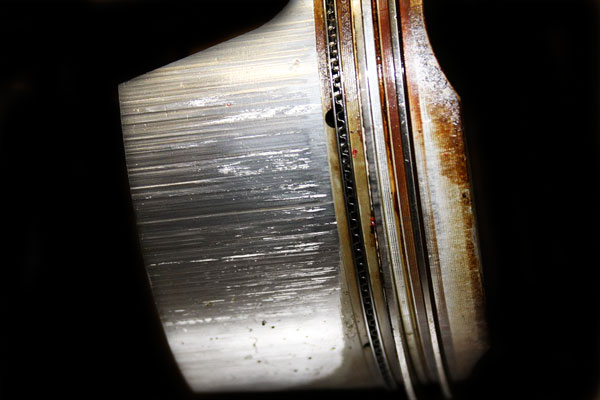 Boxster 986 M96 Cylinder Bore Scoring
Boxster 986 M96 Cylinder Bore Scoring
Checking bore scoring should be completed at a thorough PPI. The least invasive way to check for cylinder scoring is to lift the car and listen from underneath with the engine running. A normal M96 engine makes a consistent ticking sound from the valvetrain and exhaust headers.
The Noise You Don’t Want to Hear
A nasty rhythmic knock – not a tick – usually from the passenger-side cylinder bank. This knock indicates piston skirt contact with a scored cylinder wall. This is caused by wear that allows the piston to wobble at the bottom of its stroke. Left unchecked, it leads to catastrophic failure and an engine rebuild.
Scoring often isn’t visible without engine teardown but may be spotted using a borescope through the spark plug tube or more reliably by removing the oil pan and viewing the cylinders from below.
However, during a PPI most sellers will not allow you to remove the oil pan and inspect the cylinders.
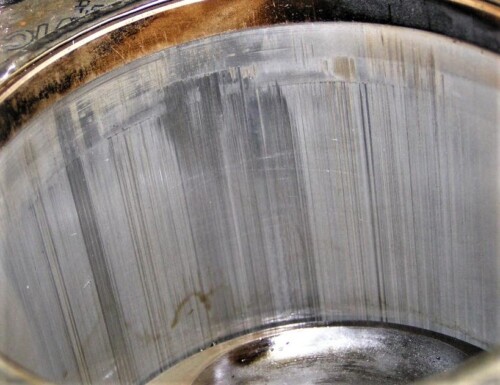 Early Signs of Cylinder Bore Scoring
Early Signs of Cylinder Bore Scoring
One of the potential early signs for significant engine problems is a mismatch in the sooty deposits inside the exhaust tailpipes and smoke from the exhaust at cold start. These signs usually show a difference in the running efficiency of one bank of cylinders versus the other and further investigation into the cause is necessary. A 986 with one black sooty tail pipe and one clean tail pipe is not a car to buy. That’s not so easy to tell if the 986 you are looking at has a single exhaust outlet. You are going to need to get further up the exhaust to identify the sooty deposits side by side.
If you hear the knock, have the mismatched tail pipes, or clouds of smoke at cold start, getting the car at zero purchase price will add $25K+ to fix it! This makes a low cost Boxster 986 either a crazy buy or a throw away car!
Boxster 986 Air/Oil Separator (AOS) Failure
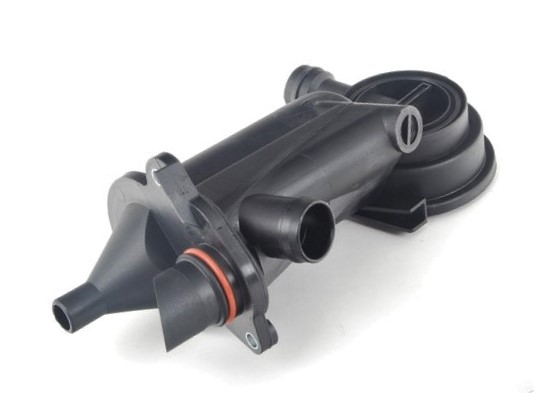 986 Air Oil Separator (AOS) Failure
986 Air Oil Separator (AOS) Failure
The AOS removes oil from crankcase gases, returning oil to the sump and routing vapors to the air intake for emissions control. When the AOS fails, oil gets pulled into the air intake system. Early signs include smoke from the exhaust on cold start, a check engine light, and fouled O2 sensors. A complete failure produces thick white smoke from the exhaust all the time.
AOS Failure Risks
A failing AOS can also cause excessive crankcase vacuum, potentially damaging the rear main seal – an issue seen in other VAG group engines. It can also throw off fuel mixtures, leading to over-fueling and bigger engine problems.
986 Transmissions - Concerns and Reliability
Manual Transmission and Clutch
Given the age of the transmission in the 986, some wear is inevitable. The early Boxster 986 had a very long second gear – you could make a cup of tea while it went through the gear to the redline. Later versions had the gear shortened to improve performance.
Check the smoothness of changing through the gears. Worn transmissions will have a significantly notchy feeling and difficulty finding the next gear. Also, a worn transmission will often pop out of gear under acceleration. A manual transmission fluid change should have been completed in the service history by now. Likely, the repair history will also show replacement of the shift linkage cables – if not, it is best to replace them sooner rather than later.
Shifter Cable Issues
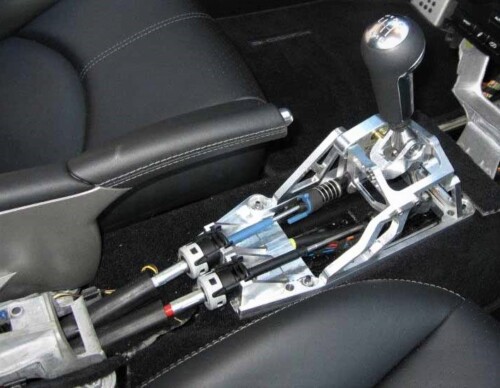 The cables connecting the gear change lever and the transmission on the 986 can often become worn. This results in difficulty engaging gears, sloppy or a vague shifter feel, and a notchy gear shift feeling. Check the history on the car and see if the shifter cables have been replaced. If not, we suggest changing them sooner rather than later for an improved driving experience.
The cables connecting the gear change lever and the transmission on the 986 can often become worn. This results in difficulty engaging gears, sloppy or a vague shifter feel, and a notchy gear shift feeling. Check the history on the car and see if the shifter cables have been replaced. If not, we suggest changing them sooner rather than later for an improved driving experience.
Options for Changing Shifter Cables
There are updated Porsche cables available and a series of aftermarket options designed to improve the shifting feel. Most include metal bushing kits, more adjustment range, and are an improvement on the original cables. The addition of a short throw shifter also significantly improves the 986 gear change.
How Long Should a 986 Boxster Clutch Last?
Clutch life varies by driver — some fail by 15K miles, others last over 100K. Signs of wear include slipping (high revs, no acceleration) and a burning smell. Judder on clutch release may indicate oil contamination from a leaking RMS.
A slipping clutch can quickly damage the flywheel, adding $700 in parts if replaced together — which is recommended. Check service history and expect clutch work eventually on any used manual transmission Boxster.
Automatic Tiptronic Transmission
The Tiptronic transmission in the 986 is generally very reliable and relatively straightforward to repair. Fluid maintenance at appropriate time or mileage is critical. Often, maintenance will be neglected because of lower mileage. On a used 986 with Tiptronic, it’s important to understand the maintenance history and catch up if necessary. Known issues are shown below:
Slow or Harsh Shifting
- Symptoms: Delayed gear changes, rough shifts, or failure to engage gear.
- Causes: Low or old transmission fluid, worn valve body, or aging valve body solenoids.
- Repairs: Fluid and filter change. In some instances, valve body rebuild or replacement.
Transmission Overheating
- Symptoms: Warning lights, limp mode, or erratic behavior after spirited driving.
- Causes: Clogged transmission cooler or radiator, or low fluid level.
- Repairs: Replace the transmission cooler and ensure fluid is at the correct level.
Electrical Control Issues - Faults
- Symptoms: No response to gear selector, stuck in gear, dash warning lights.
- Causes: Faulty Tiptronic control module, shifter switch, or wiring faults.
- Repairs: Diagnostic scan to locate faults; replace control module or sensor if necessary.
Torque Converter Problems
- Symptoms: Shuddering at low speeds, poor acceleration, high RPMs with low power.
- Causes: Worn or failing torque converter lock-up clutch.
- Repairs: Torque converter replacement.
986 Cooling System Concerns
Front Radiators and Air-Conditioning Condensers
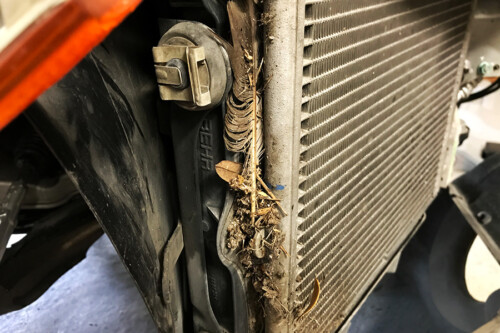 The 986 front-mounted radiators and A/C condensers sit low and exposed, making them prone to stone damage and debris buildup – especially leaves trapped around the sides.
The 986 front-mounted radiators and A/C condensers sit low and exposed, making them prone to stone damage and debris buildup – especially leaves trapped around the sides.
The ducting to the radiators and condensers should be cleaned regularly or protected with mesh screens. Thorough cleaning requires removing the front bumper – something most owners skip.
When inspecting a 986 for purchase, shine a flashlight into the front air intakes. If you see leaves or buildup, it’s a sign of neglect. Corroded or damaged radiators/condensers can’t be repaired—only replaced.
Water Pump Failure
The water pump is simple to reach from the panel inside the car and checking the amount of play on the pulley is relatively simple. With the engine running, observe the pulley and see if there is any sign of wobbling. If the pulley wobbles replace the water-pump. Most 986 Boxster owners have already completed this work at least once. Under worst circumstances, you can hear the water pump knocking from inside the car just behind the driver seat.
Leaking Coolant Reservoir
A common and frustrating issue with the 986 is a small crack in the coolant reservoir. It often starts with a faint coolant smell while driving and slow fluid loss. The reservoir can suddenly split and dump all the coolant risking engine overheating.
Replacement isn’t costly but is tricky due to the tight space. Replacement plastic reservoirs can frustratingly be cheap and not well made, often leading to repeating this job multiple times over the 986 lifecycle. We recommend you get the part from Porsche for the latest and best quality.
986 Boxster Braking System Check points
Checking for Brake Wear
The brakes on the 986 Boxster are generally excellent. The S model features larger brakes that are matched to the 911 996. Brake pad material does degrade over time – check on low mileage examples to see when the last brake service was performed. The brake fluid history should show a change every few years regardless of mileage. Measure the amount of brake pad material remaining – you want more than 3mm. At the 3mm mark the brake pad wear sensor will trigger the replace brake pads light.
A complete brake service with pads, rotors and sensors can be quite expensive. So, if you’re buying from a used car vendor, look for new pads on old rotors. Both the pads and rotors should always be changed at the same time. Used car centers are famed for just replacing the pads and leaving on the old rotors. “The car has new brakes” – not if the rotors weren’t changed it doesn’t.
Worn Rotors Crack or Disintegrate Quickly
This can be particularly unpleasant when driving! The 986 Boxster has drilled rotors. Look carefully to see how clear the drill holes are and make sure there are no cracks between the drill holes. Cracks between the drill holes can lead to a much bigger crack developing and rotor failure very quickly under heavy braking. A failed brake rotor when you are trying to stop quickly is an unpleasant experience!
Bodywork, Cabriolet Top, Suspension and Tires
Windows and Convertible Top Issues
Test the cabriolet top thoroughly to ensure smooth operation. Many issues with the top are minor but can be frustrating if discovered on your first sunny day drive. Early 986 Boxster cabriolet top mechanisms had non-serviceable parts – check if upgrades or repairs to the cabriolet top mechanism is in the car’s history.
The tops degrade with exposure to the environment. Many can be refreshed but in some circumstances, replacement will be needed. You should also be aware of the change between plastic rear screens and glass versions. Later 986 models had a glass insert that is much more durable. The plastic rear window dries and cracks easily with use.
Window Problems
The 986 Boxster commonly had issues with the regulation of window drop when opening the driver’s door. Pulling the handle should cause the window regulator to drop the window below the stop point inside the convertible top. The window should rise and hit the stop point when the door is closed. This functionality can be lost during a battery change, or be caused by a faulty widow regulator, or faulty door handle microswitch.
In some circumstances the window regulator can be reset to solve the problem. This is done by relearning the stop points. With the ignition on:
- Close the door fully.
- Fully lower the window using the window switch. Hold the switch down for 5 seconds after the window reaches the bottom.
- Fully raise the window using the window switch. Hold the switch up for 5 seconds after the window reaches the top.
Thoroughly check the window drop on both doors before buying a 986.
Body Water Drains
Inspect the car for water leaks, especially behind the driver seat. Blocked roof drains can cause water to enter the cabin and damage electronic modules. Clearing drains is easy; neglecting them is costly. Check thoroughly for signs of water leaks around the top and on the floor area.
Rear Spoiler
The rear spoiler on the 986 Boxster is automatically deployed based on speed but can also be manually controlled through an interior switch.
Deployment Speed
- Automatically rises at approx. 75 mph (120 km/h).
- Automatically retracts at approx. 50 mph (80 km/h).
Check the functionality of the rear spoiler. Common issues include being stuck up or down and a general failure to deploy. If there’s a malfunction, a spoiler control failure message or warning light may appear on the dashboard. Spoiler failure issues can be expensive, so check the functionality thoroughly before purchase.
Suspension
986 Boxster Suspension Issues
The 986 suspension is extremely durable. However, rubber bushings and struts can be worn with age. Listen for clunks or squeaks and check for fluid leaks from suspension struts. The most common issues are as follows:
Worn Control Arm Bushings
- Symptoms: Clunking noise over bumps, uneven tire wear, loose steering feel.
- Cause: Original rubber bushings degrade over time.
- Fix: Replace control arms or bushings. Many owners upgrade to polyurethane or monoball bushings for improved precision.
Failed Lower Control Arms
- Symptoms: Clunking, instability under braking, poor alignment retention.
- Fix: Replace with OEM or upgraded units
Top Mounts / Strut Mounts
- Symptoms: Squeaking, clunking over bumps, poor ride quality.
- Fix: Replace top mounts when changing struts/shocks. Consider GT3 mounts or aftermarket alternatives for improved feel.
Worn or Leaking Shocks or Struts
- Symptoms: Bouncy ride, nose dive when braking, poor cornering stability.
- Fix: Replace shocks. Many aftermarket options available.
Sway Bar End Links & Bushings
- Symptoms: Clunks or rattles during cornering.
- Fix: Replace worn end links or sway bar bushings. Consider adjustable end links if running coilovers or lowered ride height.
Alignment & Ride Height Issues
- Symptoms: Pulling to one side, excessive inner tire wear.
- Fix: Get a professional alignment, ideally from a Porsche specialist. Many Boxster models are misaligned due to aged components.
Tire Age and Tire Wear
Uneven tire wear, especially on the inner rear shoulders, often points to worn rear control arms, poor toe setting, aggressive camber settings, and general poor alignment. Check the rear tire wear pattern thoroughly.
Check tire DOT manufacturing dates — anything over 5 years old should be replaced, even if tread looks good. Low-mileage cars often have old, degraded tires that can fail despite the minimal wear level.
986 Boxster Maintenance, Running Costs, Spare Parts, Repairs
986 Boxster Maintenance Service Schedule
By now, most 986 Boxster models have exceeded factory mileage intervals by age. Maintenance should be based on elapsed time and physical inspection, not just mileage. We recommend working with a specialist Porsche shop from our list to assess maintenance needs based on condition and elapsed time. Our guide to maintenance on the 986 covers everything you need to know about efficiently servicing your 986. If you have further questions or concerns about the maintenance requirements of your 986 Boxster, you may find answers that can help you further in our guide to Boxster maintenance service questions.
Get a More Personable Relationship with a Porsche Repair Shop
Many dealerships are limiting service to newer vehicles, often turning away Porsche models over 10 years old due to a lack of technicians trained in older cars. In contrast, independent shops usually have decades of experience, offer a more personalized service, and often allow customers to see and understand the work being done on their car first-hand. We recommend you use a local recommended Porsche repair shop for your 986 Boxster.
986 Boxster Running Costs
Create a maintenance plan based on inspections and the advice from a repair shop. We recommend you budget $60 a month for routine service, covering annual, intermediate, and major maintenance over four years. Plan extra for new tires and brakes based on mileage and condition.
See our Boxster 986 maintenance guide.
Additional costs include repairs, insurance, and taxes. Repair costs can vary dramatically depending upon the issue that needs to be resolved. We suggest budgeting $100 per month to cover likely repairs over a four year period.
Early 986 Boxster – Lower purchase price – higher repair costs likely
Late production 986 Boxster – Higher purchase price – Slightly lower repair costs likely
Parts Availability
Parts availability for the Porsche Boxster 986 is very good. Porsche has supported the 986 well through its Porsche Classic parts program. Many original parts were revised and reused on the later chassis and there are many commonalities between the Boxster and the 996 911. Many components are still in production or at least readily available through after-market suppliers. Parts that are harder to find include interior trim components, cabriolet motors and sensors, headlights, and infotainment system replacements.
The Buying Process
What to Look for When Buying a 986 Boxster
Pre-Purchase Inspection (PPI)
Once you’ve found a potential 986 Boxster, your first step should be a thorough inspection by a Porsche specialist. A pre-purchase inspection (PPI) can uncover hidden mechanical issues that aren’t obvious at a glance. It’s important to use a competent and experienced shop to perform the PPI. Providing the shop with any known repair or maintenance history on the car will help them with a detailed assessment.
Feedback From a Pre-Purchase Inspection
The inspection should uncover the details of the mechanical wear on the Boxster and the general condition. What you also want to know from the report is what’s next. Before making the purchase, you want to know the extent of maintenance work needed on the car in the next few years. Use our maintenance guide for the 986 to map the history to your next maintenance steps. You also want to know the age and health of the battery and the DOT on the tires.
Fault Codes and Over-Revs
The PPI Should Check Fault Codes and Emissions Readiness
Before buying any car, it’s crucial to check when the OBD fault codes were last cleared and to verify the emissions monitor status. A seller can easily clear codes just before your test drive, which also resets the emissions monitors to “not ready.”
Since emissions tests require multiple drive cycles, hidden issues may not reappear for many miles. During a PPI the shop should confirm that the emissions system shows “ready” – this indicates the car has been driven enough since the last reset and isn’t hiding recent faults.
How Hard Has the Car Been Driven?
Over-Rev Counter
Revving an engine to the red line is safe and even healthy for the 986 engines when done correctly. A proper gear change at redline may briefly raise RPM slightly—this is normal and harmless. However, selecting the wrong gear (like downshifting instead of upshifting) can cause the engine to over-rev way beyond the red line. This common mistake, known as a miss-shift, has led to catastrophic engine failures in many Porsches.
Recorded Events
Fortunately, Porsche’s engine management system logs key data, including engine over-rev events. The ECU permanently records engine hours and when these events occurred.
There are six over-rev levels, from minor redline hits to extreme, potentially engine-damaging RPM spikes. Lower-level events often just show spirited driving, but higher-level over-revs may indicate serious stress and events that could shorten the engine life. During a PPI you want to know what over-rev details are recorded in the ECU.
Track Use, HPDE & Over-Rev Insight
Many Porsche owners enjoy track days, where gear changes often occur near redline. These can trigger entries in the lower over-rev ranges, which are logged by the ECU. Multiple entries in these lower levels may suggest frequent track use, offering insight into how hard the car has been driven—and how well it may have been cared for over time. Discuss and take the opinion of a specialist Porsche shop based on the over-rev detail stored in the car you want to purchase.
Why Is the Car for Sale?
There are often very genuine reasons why a car is for sale. We all move on, however, older cars are often put up for sale when mechanical issues are deemed too expensive. Did deep and if possible, understand why the car is for sale.
Who Is Selling the Car?
If you’re buying from a used car dealer, find out where they sourced the 986. A Porsche-focused dealer is a good sign. But if the dealer typically sells budget minivans, proceed with caution. Who trades in a Porsche at a used car lot that doesn’t specialize in them? Often, it’s someone offloading a car with hidden issues, betting the dealer won’t notice. Do your homework.
Actual Production Date – Sticker On Driver’s Door
Most cars are advertised using the model year or registration year. This can be misleading. The production year runs August through July. That means cars produced in August through December are described as the following year’s production e.g. September 2001 production is often called a 2002 model year car.
Why Does This Matter?
The simple answer is parts. The actual production date is critical to understand the components fitted on the car. In the 986 case, the change in IMS bearings for example happened in a specific production window. Knowing the actual production date for the 986 you plan to buy can help you determine the real value of the car.
Mileage Covered
10K miles per year is considered good condition for most cars. However, most 986 Boxster cars do not do 10K miles per year. Typically, they will have covered more mileage in their first ten years of age and then progressively slowed down in mileage per year subsequently. What’s important to discover is how the maintenance for the 986 changed over the mileage covered and its frequency – that will likely tell you more about the health of the car versus the total mileage covered.
What Type of Mileage
High speed freeway driving versus around town local driving can have a serious influence on the overall engine and transmission condition. Long drives at higher speeds tend to produce less wear as opposed to lots of cold starts and short journeys. Look at the location of the owners and make a judgement based on the mileage recorded over the time the owner used the car.
Low Mileage Garage Queen – Not So Fast!
While low mileage on a 986 is appealing, it can come with its own set of issues. Infrequent use often means missed service intervals, leading to age-related wear in fluids, seals, tires, brakes, and clutch components. Lack of maintenance based on time is risky. For example, spark plugs should be replaced every 10 years, regardless of mileage, and brake fluid flushed every 2–3 years. Tires too may have good remaining tread but can still be unsafe if over 5 years old.
Low-mileage cars often demand a premium but be sure to budget for catch-up maintenance after your purchase.
Number of owners
For most Porsche cars, especially 20 year + 986s, the number of previous owners matters less than the car’s maintenance history and overall condition. What really matters is how long each owner had the car and how well they took care of it. If you see an increasing number of owners over a decreasing amount of time, that may well be a sign of neglect
Title status, Accident History
There are several good ways to check the title status on a vehicle available. All you need is the vin number.
- National Motor Vehicle Title Information System (NMVTIS) – Government-backed, very reliable
- Carfax – Detailed history reports
- AutoCheck – Similar to Carfax
- VINCheck (NICB) – Free check for theft/salvage
Geographic Ownership History
Understanding where the car has been in the country can give you some clues as to its history of use. Cars in the south are likely to have been driven regularly as the weather does not preclude the enjoyment of the 986. However, cars in northern states are often stored during the wintertime and experience a good number of months without being driven. Climate too can be a factor. Hot and dry versus high humidity has different effects on the health of rubber components and interior trim for example.
Porsche 986 Boxster Years to Avoid
This is a common question and not one that is easily answered. All 986 model year production has potential issues that you should pay close attention to. The later production 986 cars are more desirable but are still at risk for major failures without preventative work and good maintenance. The early 986 Boxster is a real bargain.
Buying Out of State or From Distance
As luck would have it, the Porsche you really want is on the other side of the country! This used to be an issue, but these days buying cars out of state is commonplace. There are technology based tools to enable a smooth transaction and help minimize the risks, and excellent ways to transport you car home.
Tips for Buying a Porsche Out of State
- Start with a thorough online evaluation
- Get detailed photos: exterior, interior, engine bay, undercarriage, and tires.
- Request a walkaround or live video call (FaceTime or Zoom) to confirm condition.
- Run a VIN check
- Use Carfax, AutoCheck, or VinAudit to check for accidents, title issues, maintenance history etc.
- Get an option list or build sheet using a vin decoder
- Use an escrow service for the transaction
- Insure the car before transport to you
Transporting the Car – Recommended Car Carriers
Some buyers like to fly in, put their hands on the car, complete the transaction and drive home. In many cases this is not practical, and so buyers turn to shipping companies to transport their new purchase directly to their home. If you’re buying from a Porsche sales specialist, they will likely have an option and can recommend a car shipping company they typically work with. Here are some shipping companies that we have worked with that offer excellent service:
Find a Local Porsche Repair Shop For Support
Recommended Porsche Repair Shops You Can Trust
Ownership and Driving Experience
What to Expect and How to Personalize Your Boxster 986
What’s the 986 Boxster Like to Live With?
All versions of the 986 are easy to drive, park, and have fun in. The ride quality and handling improved through the versions, but even the original 986 is bags of fun to drive with the top down. The early version is somewhat under powered, and the auto transmission is sluggish. Don’t expect a racy sports car. Later versions, especially the S model, certainly have a bit more zip about them. The early 986 is more raw and closer to the air-cooled experience than the later more sophisticated cars.
Save 20% - Efficient Maintenance Service
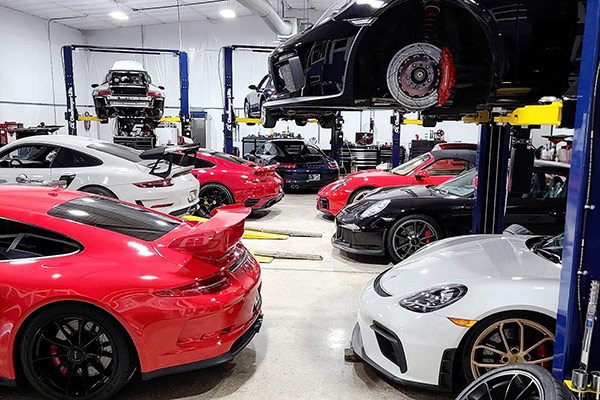 Boxster 986 Recommended Maintenance Intervals
Boxster 986 Recommended Maintenance Intervals
Maintenance on the Boxster 986 is due annually, with an intermediate service at 2 years or 20K miles, and a major service at 4 years or 40K miles.
Recommended Porsche Repair Shops
Save 20% on Maintenance Service and Repairs
Interior Expectations
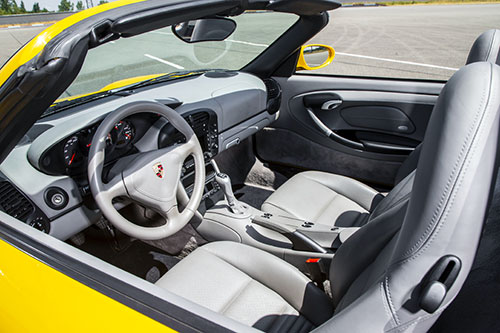 Original versions have plastic interior parts that can easily become discolored due to wear and tear. The HVAC digital screen is prone to losing parts of digits, which leaves you wondering just what setting you really are looking at. However, there is a healthy used parts market that can solve some of those problems easily and cost effectively. Generally, the interior is simple, well laid out, and practical. The later versions have better styled interiors than the original, however, the inside is more focused on practicality as opposed to luxury.
Original versions have plastic interior parts that can easily become discolored due to wear and tear. The HVAC digital screen is prone to losing parts of digits, which leaves you wondering just what setting you really are looking at. However, there is a healthy used parts market that can solve some of those problems easily and cost effectively. Generally, the interior is simple, well laid out, and practical. The later versions have better styled interiors than the original, however, the inside is more focused on practicality as opposed to luxury.
Add a Short Throw Shifter for More Fun
If you buy a manual transmission car, the biggest change you can make to the livability of the car is to install a short throw shifter. The distance between gears on the manual trans 986 is not that different from a bus! A short shifter improves the feel of the car tremendously and reduces the likelihood of missing a gear during the long travel from second to third for example.
Tire Management
The 986 uses Porsche N rated tires. If the car you buy has 19-inch rims, you’ll be looking at more than $1k for a set of 4 tires. The rear tires will wear more quickly than the fronts on the 986 due to the suspension setup. It’s important to stay on top of vehicle alignment – any loss of alignment on the rear of the Boxster will eat the inner shoulder of the rear tires rapidly. This is difficult to see because it’s so far under the car but check it regularly or you’ll be buying rear tires way more often than you expect.
HPDE – Track Days
If your ownership plans include heading out for a track day (HPDE), then the 986 can be a lot of fun. You need to check with the group organizing the track day on your ability to drive the Boxster at the event. Some events do not permit soft top vehicles.
On track, the car is easy to drive quickly, and well balanced. You’ll have to ignore the 911 cars passing you and focus on your space – you shouldn’t get passed by a Miata!
Upgrades and Modifications
There are still several manufacturers that support the 986 for upgrades such as wheels, exhaust, intake systems etc. In addition, many of the body panels, spoilers or bumper assemblies from later model versions are interchangeable with early models.
Third Radiator Upgrade
One of the easiest and most effective upgrades to make to a 986 is to add the third coolant radiator if the car is not fitted with it as standard – S models have the third radiator as standard. The third radiator helps keep engine temperatures down and may contribute to better engine performance and longevity in the base model.
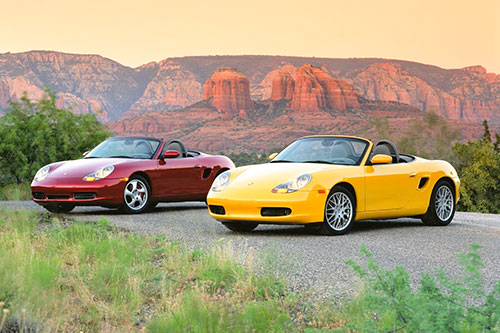 What Porsche 986 Boxster Would We Buy?
What Porsche 986 Boxster Would We Buy?
The 986 Boxster is not really a good choice for practical everyday motoring, although a shorter ride to the office during the summer months is a reasonable consideration. To be fair, the early 986 is more of a weekend joy ride car than a pleasant commute to the office – nowhere to plug in your iPhone! Later cars improved on that and the revised versions after 2002 also make every day use more of a reality.
The most desirable 986 cars are the 03 – 04 final production year with the M96.24 engine. These cars top the HP range of the 986 and are a little more refined than the original versions. These are harder to find and command a premium price. The later M96 engine is an improvement on the original version but still has potential issues to be aware of.
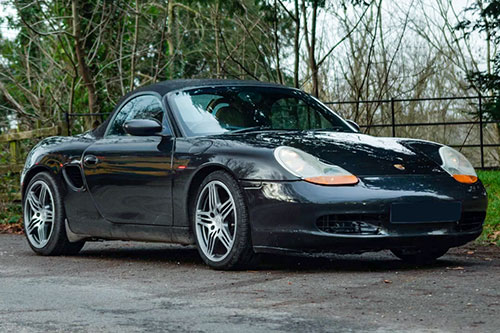 Boxster 986 Bargains
Boxster 986 Bargains
The last versions of the 986 Boxster are still making good money. Finding a lower mileage car with good service history and work, like the IMS retrofit, having been completed, is probably the best value. However, the problems with the 986 are so well known, that a bargain basement car with higher mileage could still be a worthwhile investment, provided you are prepared to spend a little money straightening out the known issues.
Early Boxster 986 versions are a bargain – with a little tlc, you have a great 2 seat Porsche sports car you can drop the roof on for less than $10K! Typically these cars need some paint restoration, maintenance, and some mechanical preventative work. We think they make for an excellent way to jump into the Porsche owner world.
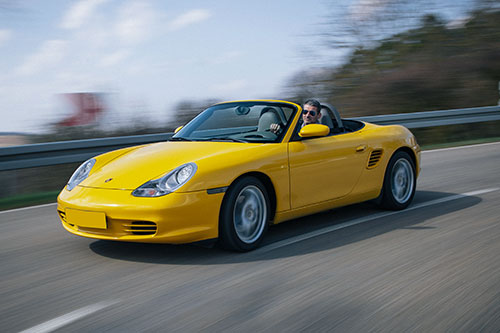 Manual vs. Automatic Transmission
Manual vs. Automatic Transmission
We don’t like the automatic transmission 986 Boxster! The early auto version with a 2.5L engine is just plain dull and not worth the money being asked – just saying! It is still a practical smooth drive but just not the sporty feel we favor. Our preference is for the third pedal and manual control.
- Best bargain – low mileage 986 2.5L manual transmission
- Best value model – low mileage 3.2L S Model 6-speed with IMS upgrade
- Best driver and HPDE – 03 – 04 low mileage 3.2L S Model 6-speed with IMS upgrade
Feel free to reach out to us if you have questions regarding purchasing a 986 Boxster.
